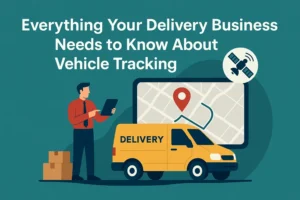Maximizing Ecommerce Potential – Boosting Sales and Revenue with Blogging
By TOI Staff
August 20, 2023
Update on : August 20, 2023

Embracing the Ecommerce Evolution: Leveraging Blogging for Business Success
In the grand scheme of business evolution, ecommerce is still a relatively new kid on the block. Yet, it’s hard to overstate the colossal impact it has had on our world. The digital marketplaces we take for granted today have revolutionized not just how we shop, but how businesses operate and compete on a global scale. From niche indie brands to colossal corporations, ecommerce has leveled the playing field, rendering geographic limitations irrelevant and creating unprecedented opportunities for growth and success.
This blog post is dedicated to one simple, yet powerful, strategy to maximize your ecommerce potential: blogging. Yes, you heard it right – the humble blog, often overlooked amidst flashier digital marketing tools, holds untapped potential for boosting your ecommerce sales and revenue.
As we delve into this topic, we’re going to explore how a well-constructed blog can do more than just entertain. It can attract potential customers, increase engagement, promote your products, and even tell your brand’s story in a compelling way.
However, harnessing the full power of blogging isn’t just about publishing content and hoping for the best. It requires a strategic approach and an understanding of the unique dynamics at play in the ecommerce ecosystem.
In the world of ecommerce, diversity in marketing strategies isn’t just a good idea – it’s a necessity. As the digital marketplace becomes increasingly crowded, standing out from the crowd is paramount. And that’s exactly where blogging can make a difference.
Stay with us as we unlock the potential of blogging for your ecommerce venture, providing you with the insights and tactics you need to make the most of this dynamic marketing tool.
Unlocking the Ecommerce Powerhouse: The Influential Role of Blogging
Blogging and ecommerce may seem like strange bedfellows at first glance. One might wonder, how can a series of blog posts drive tangible business outcomes like increased sales or revenue? When we dig deeper, it becomes clear that blogging is a powerful tool for businesses operating in the digital space.
Firstly, blogging provides a platform to showcase your brand’s expertise and values. Regularly posting informative and relevant content not only builds trust and credibility but also positions your ecommerce venture as an authority in your niche. Customers are more likely to buy from businesses they perceive as knowledgeable and reliable.
Secondly, blogging offers an ideal avenue for customer engagement. Whether through comments, shares, or likes, blogs can facilitate meaningful interaction between your brand and its customers. This interaction not only fosters a sense of community but also helps gather valuable customer feedback.
Now, let’s get a bit data-driven here to cement our understanding. Did you know that companies who blog receive 97% more links to their websites? Or that businesses that prioritize blogging are 13x more likely to achieve a positive ROI on their efforts? If that doesn’t speak volumes about the potential of blogging for ecommerce, I don’t know what does.
Moreover, a survey conducted by HubSpot revealed that 60% of consumers feel more positive about a company after reading custom content on their site. And 70% of consumers learn about a company through articles rather than ads. These numbers underline a crucial fact: blogging is more than just a platform for sharing information.
So, by now, you might be realizing that blogging is indeed a hidden gem in the ecommerce world. By fostering brand credibility, encouraging customer engagement, and shaping consumer perceptions, blogging carries immense potential to fuel your ecommerce success. But remember, understanding its power is just the first step. There are specific strategies and nuances involved in ecommerce blogging that make it truly effective, which we’ll delve into in the upcoming sections. Stay tuned!
Sparking Conversations: How Blogging Enhances Ecommerce Customer Engagement
In the era of ecommerce, customer engagement is a key component of any successful online business. It’s all about creating meaningful interactions with your audience to build relationships, foster loyalty, and, ultimately, drive sales. Now, let’s discover how blogging becomes an effective catalyst for this crucial process.
For starters, a well-crafted blog post is not just a one-way communication tool. It can spark conversations, inviting readers to comment, share their thoughts, or ask questions. These interactions provide a wealth of opportunities for businesses to connect with their audience, gather feedback, and learn more about their customers’ needs and preferences.
Also, a blog gives your ecommerce business a human touch, a voice that speaks directly to the customers, making them feel connected to your brand. This connection can significantly increase customer loyalty, encouraging repeat purchases and creating brand advocates who voluntarily promote your business.
Let’s delve into some strategies for enhancing customer engagement through blogging. One effective tactic is to craft content that directly involves your audience. You could run a competition, ask for feedback, or encourage user-generated content. For instance, a fashion ecommerce store might publish a blog post asking readers to share photos of themselves wearing items from the store, offering a discount code as a reward.
Another strategy is to use your blog to provide exceptional value to your customers. This could involve posting expert advice, how-to guides, or insightful industry analysis. By offering valuable, relevant content, you not only draw customers to your blog but also give them a reason to stay, explore, and engage with your brand.
Quality is key in customer retention. The more valuable and engaging your content, the more likely your customers are to return for more. They’re also more likely to recommend your blog (and your ecommerce store) to others, bringing in even more potential customers.
Take, for example, the story of Glossier, a skincare and beauty products company. They started as a beauty blog, ‘Into the Gloss’, where they posted makeup reviews, beauty tips, and interviews with industry professionals. The blog built a loyal community of followers who felt connected and engaged with the brand. When Glossier launched their product line, they already had a loyal customer base eager to buy.
In summary, effective blogging fosters engagement by creating a space for conversation, giving your brand a relatable voice, and providing exceptional value. By employing these strategies, you can not only attract customers to your ecommerce store but also keep them coming back for more. In the next section, we’ll explore how to subtly integrate product promotion into your blog posts to further boost your sales. Stay tuned!
The Art of Subtle Promotion: Integrating Products into Your Blog Posts
You’ve developed your blog, created engaging content, and have started to see an increase in customer interaction. Now, it’s time to master the art of subtly integrating product promotion into your blog content. Here’s how it can be done effectively to maximize your ecommerce potential without turning your audience away.
Promoting products in your blog posts doesn’t mean turning every blog into a sales pitch. In fact, doing so can be counterproductive, leading to your audience feeling overwhelmed and disinterested. The secret lies in seamlessly weaving your products into the narrative, making them a natural part of the story or the solution you’re presenting.
Let’s illustrate this with an example. If you’re running an online health and wellness store, you might write a blog post about maintaining a balanced diet. Within the post, you could subtly mention how your store’s organic chia seeds can be a great addition to breakfast cereals, or how your special green tea blend helps in detoxification. This way, you’re offering valuable advice while also showcasing your products.
Another strategy is to use your products to tell a story. Show your readers how your products fit into their lives, solving their problems or enhancing their experiences. For instance, an online clothing store might create a blog post about the latest fashion trends, showcasing how items from their collection fit into these trends. This not only informs readers about what’s hot in fashion but also shows them how they can stay on trend by shopping at your store.
Product reviews and testimonials can also be a part of your blog. These can provide social proof, demonstrating to potential customers the value your products have added to others’ lives. However, it’s important to ensure that these reviews are authentic and not overly promotional.
One of the successful examples of product promotion through blogs is that of the company Patagonia. Their blog, ‘The Cleanest Line’, often features stories of outdoor adventures, environmental initiatives, and community events, subtly showcasing their products within these narratives. The products are presented as part of the lifestyle their readers aspire to, not as mere items for sale.
When it comes to creating compelling promotional content, ensure it’s engaging, informative, and resonates with your audience. Always put the needs and interests of your readers first, offering them valuable insights, and they’ll be more likely to trust your recommendations and explore your products.
In the next section, we will further discuss how to use your blog for brand storytelling, a powerful tool to connect with your audience on an emotional level and foster brand loyalty. Stay tuned!
Weaving Stories with Your Brand: The Role of Blogging in Brand Storytelling
Brand storytelling is becoming increasingly important in today’s ecommerce landscape. It’s all about creating an emotional connection with your customers that goes beyond the transactional nature of buying and selling. This section delves into how blogging can help create and enhance your brand’s story, fostering a deeper relationship with your audience.
Blogging is a powerful tool for brand storytelling as it allows you to showcase the human side of your business. A blog post can detail the story of how your business was created, the passion that drives it, or the challenges you’ve faced and overcome. It can even offer insights into your daily operations, like the significance of pay stubs in ensuring fair and transparent compensation for your hard-working employees. This personal touch helps build trust and fosters a stronger emotional connection with your customers.
Moreover, blogs can highlight your values and mission. For instance, if your brand is committed to sustainability, a blog post could discuss your efforts towards minimizing your carbon footprint, or how your products are sourced and manufactured ethically. Not only does this inform your customers, but it also aligns your brand with their personal values and beliefs, further strengthening their loyalty.
Another effective way to use blogging for brand storytelling is by sharing customer stories. Hearing about other customers’ experiences with your products can help potential customers visualize how your products could fit into their own lives. These stories can be powerful testimonials, offering social proof and boosting your brand’s credibility.
A shining example of an ecommerce brand effectively utilizing blogging for storytelling is the skincare company, Glossier. Their blog ‘Into the Gloss’ shares beauty tips, skincare routines, and stories from real women who use their products. They’ve successfully created a community of followers who share a passion for beauty and skincare, thus strengthening their brand identity and customer loyalty.
In conclusion, blogging can be a powerful tool for brand storytelling, creating a narrative that connects with your audience on a deeper, more personal level. Through sharing your journey, values, and customer stories, you can enhance your brand’s identity and foster strong customer loyalty.
Next up, we’ll discuss some best practices for ecommerce blogging. Stay tuned to learn more about creating a successful, engaging, and SEO-optimized blog for your ecommerce business!
Refining Your Ecommerce Blogging Strategy: Best Practices
Optimizing your ecommerce blog isn’t a one-time task; it’s an ongoing process that requires constant refining and improving. Implementing best practices can help you create engaging, SEO-optimized blog content that enhances your ecommerce potential. Here, we’ll share some of our top recommended practices for ecommerce blogging.
Consistency is key in blogging. Establishing a regular posting schedule helps maintain reader interest and gives them something to look forward to. It’s like releasing the latest episode of a beloved TV show — your audience will be excited and eager to tune in. Plus, consistently adding fresh content can improve your SEO, making your site more likely to appear in search results.
But consistency isn’t just about frequency — it also extends to the quality of your content. Make sure each blog post delivers value to your readers, whether it’s providing actionable tips, sharing industry insights, or telling compelling stories about your brand. Don’t write just for the sake of filling your blog; make sure every piece you publish is beneficial to your audience.
It’s also essential to craft SEO-optimized content. This means conducting keyword research to understand what terms your potential customers are searching for, then incorporating these terms into your blog posts.
However, SEO isn’t only about keywords. It also includes other elements like meta descriptions, headers, and image alt texts. Don’t forget about these details, as they can help improve your visibility on search engines.
Engagement is another critical aspect of blogging. Encourage your readers to engage with your content by inviting comments, asking questions, or even holding contests. Responding to comments can further foster a sense of community and make your customers feel valued.
One great example of ecommerce blogging done right is the online clothing retailer, ASOS. Their blog, ASOS Likes, features everything from fashion tips and trend updates to interviews with fashion influencers and sneak peeks of new collections. They maintain a consistent posting schedule, produce high-quality content, and have successfully built an engaged community of fashion-lovers.
In conclusion, consistency, quality, SEO optimization, and engagement are key elements of successful ecommerce blogging. By incorporating these best practices into your strategy, you can maximize your blog’s potential to attract and retain customers, boost sales, and enhance your brand image.
Next, we’ll discuss some of the potential challenges in ecommerce blogging and how you can overcome them. Stay tuned!
Tackling the Challenges in Ecommerce Blogging
Now that we’ve discussed the power of blogging for ecommerce, you may be eager to dive right in and get started. But, as with any venture, there are potential hurdles you might face. Understanding these challenges and knowing how to overcome them can set you up for blogging success.
One common challenge is producing regular, quality content. Whether you’re a small business owner wearing multiple hats or part of a larger company with a wide range of responsibilities, finding the time to brainstorm, write, and edit blog posts can be daunting. In this case, consider hiring a dedicated content writer or outsourcing to a content creation agency. You could also create a content calendar to organize and schedule your posts in advance, making the process more manageable.
SEO optimization is another area that often proves challenging, particularly for beginners. Keyword research and staying updated with SEO best practices can feel overwhelming. Fortunately, there are plenty of tools out there to help, like Google Keyword Planner for keyword research or Yoast SEO for overall optimization guidance.
Ecommerce businesses might also struggle with ensuring their blog content aligns with their product offerings. It can be tricky to balance informative, engaging content with subtle product promotion. The solution? Always keep your audience’s interests and needs at the forefront. Write content that addresses their pain points or offers solutions to their problems.
Finally, engaging your audience can be more challenging than it sounds. Low engagement may be due to a variety of factors, from lackluster content to a lack of promotion. To tackle this, make sure your content is exciting and valuable to your readers. Promote your blog posts on your social media channels and encourage feedback and comments from your readers.
While these challenges might seem intimidating, they’re just obstacles on the road to success. With the right strategies and tools, you can overcome them and maximize your ecommerce blog’s potential.
In the next section, we’ll conclude our discussion on ecommerce blogging, revisiting the key points covered in this blog post and emphasizing the significance of blogging in boosting ecommerce sales and revenue. Stay tuned!
Wrapping Up: The Power of Blogging in Ecommerce
As we approach the end of this comprehensive guide, it’s clear that the landscape of ecommerce has been transformed with the rise of blogging. From understanding its power to employing the best practices, it’s evident that strategic blogging can be the key to maximizing ecommerce potential.
Let’s revisit some of the key points we’ve covered:
We began with the basics, understanding how blogging contributes to ecommerce. By showcasing relevant statistics and facts, we recognized the effectiveness of blogging as a tool to boost ecommerce sales and revenue.
Next, we delved into the role of blogging in attracting potential customers and enhancing customer engagement. Blogging not only improves your website’s SEO but also drives traffic through content marketing. We saw how quality content can retain customers and encourage repeat sales, forming an integral part of the ecommerce ecosystem.
We also discussed the power of blogging for product promotion and brand storytelling. It’s all about integrating product promotion subtly into your blog posts, creating compelling promotional content, and using your blog to enhance your brand story.
Best practices for ecommerce blogging and potential challenges were also covered. From maintaining consistency and quality to overcoming hurdles like content production and SEO optimization, we learned that with the right approach, we can leverage blogging to our advantage.
The path to ecommerce success may be winding, but with blogging, you’re equipped with a powerful tool to navigate the journey. As we wrap up, remember that each blog post is a step closer to your audience and a step further in your ecommerce success story.
Embrace the power of words, make your story heard, and see your ecommerce business reach new heights. Remember, the pen (or rather, the keyboard) is mightier than the sword, and in the world of ecommerce, mightier than ever.
Keep blogging, keep growing. Your ecommerce success story is just a blog post away!
Read more: Maximizing Ecommerce Potential – Boosting Sales and Revenue with Blogging















